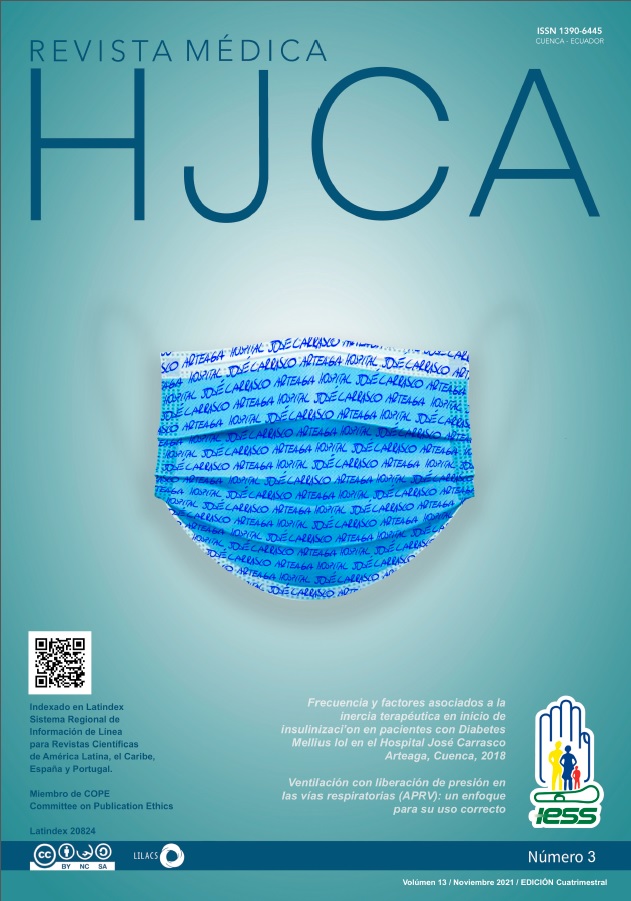Ventilación con liberación de presión en las vías respiratorias (APRV): un enfoque para su uso correcto
Palabras clave:
VENTILACIÓN LIBERADORA DE PRESIÓN DE LAS VÍAS AÉREAS, VENTILACIÓN MECÁNICA, SÍNDROME DE DIFICULTAD RESPIRATORIA DEL ADULTO, VOLUMEN DE VENTILACIÓN PULMONAR, AIRWAY PRESSURE RELEASE VENTILATION, MECHANICAL VENTILATION, RESPIRATORY DISTRESS SYNDROME, TIDAL VOLUMEResumen
El uso de APRV de una manera correcta, brinda apertura alveolar la mayor parte del ciclo respiratorio, disminuyendo sus movimientos y el estrés pulmonar, lo que reduce el poder mecánico (PM) y el riesgo del daño causado por la ventilación mecánica invasiva.
Desde sus inicios, hasta la actualidad, la ventilación con APRV ha sido criticada por los resultados obtenidos en diferentes investigaciones. Al analizarlos se puede observar que la aplicación de este modo de ventilación mecánica, no es siempre el adecuado, interfiriendo con el objetivo mismo de este modo ventilatorio. En la presente revisión bibliográfica describimos los fundamentos fisiológicos y la manera correcta de usar APRV en los pacientes de terapia intensiva, así como evidencia que justifique las ventajas y desventajas del APRV.
ABSTRACT
Airway pressure release ventilation (APRV): an approach to its correct use
The correct use of APRV provides alveolar opening for most of the respiratory cycle, reducing its movements and pulmonary stress, which reduces the mechanical power and the risk of damage caused by invasive mechanical ventilation.
From its beginnings, to the present, ventilation with APRV has been criticized due to the results obtained in several research. Analyzing them, it can be seen that the application of this ventilation mode is not always adequate, interfering with its very objective. In this short-review, we describe the physiological foundations and the correct way to use APRV in intensive care patients, as well as the evidence that justifies the advantages and disadvantages of APVR.

